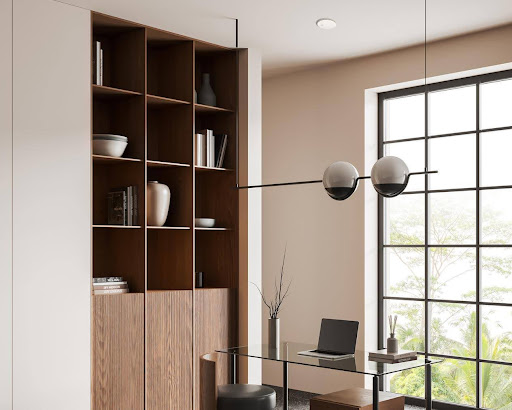What do you crave when you walk into a dark room alone with both hands occupied? Yes, someone who can turn on the light to guide your way! This article, however, will introduce a brilliant “something” for you. They offer convenience and keep your independence by achieving seamless automation– the home automation sensor! Primarily, we will focus on two popular types, giving you a detailed comparison of vacancy vs. occupancy sensors.
 Vacancy vs. Occupancy Sensor: Definitions and Applications
Vacancy vs. Occupancy Sensor: Definitions and Applications
-
What Are Vacancy Sensors?
Vacancy sensors, also known as manual-on sensors, operate on the premise of user-initiated activation. In spaces equipped with vacancy sensors, occupants must manually trigger the sensor to activate connected devices such as lighting or HVAC systems. Once activated, these devices remain operational until the user exits the space or manually deactivates the sensor.
-
What Are Occupancy Sensors?
Different from vacancy sensors, occupancy sensors are often referred to as automatic-on sensors. They function autonomously to detect the presence of occupants within a given area. Once motion is detected, occupancy sensors will do their jobs from lighting control to energy management, providing seamless automation without the need for user intervention.

To sum up, the difference between vacancy and occupancy sensors mainly lies in how they are triggered. But both of them take advantage of the fundamental principle of motion detection. They leverage various technologies, such as passive infrared (PIR), ultrasonic, or microwave sensors, to discern changes in their surroundings, thereby enabling automated responses based on detected motion.
The key to your decision-making is whether manual activation is needed for the specific area. For instance, vacancy sensors can be ideal for spaces where intermittent occupancy is expected, like bathrooms and conference rooms. They ensure energy consumption only happens when people are present. For environments characterized by frequent activity, such as hallways and living rooms, occupancy sensors are recommended as they save you the time and energy of frequently finding the switch.
5 Tips on How to Choose the Right Sensors for Smart Home
To fully enjoy smart home technology integration, you may have the following 5 tips for your choice of home automation sensors.
-
Compatibility and Communication
Confirm compatibility with your current smart home setup and select sensors that support communication protocols such as Wi-Fi, Zigbee, or Z-Wave to facilitate seamless integration and interoperability with other devices.
-
Sensor Types and Functions
Evaluate the specific sensor type based on the requirements of each space within your home and the desired level of automation and control. Consult experts or people who have applied different home smart sensors for more grasp besides the difference of vacancy vs. occupancy sensor.
-
Power Source and Installation
Consider factors such as power source options (battery-powered or hardwired) and installation requirements (flush-mounted or surface-mounted)to determine the most suitable home automation sensor for your home environment.
-
Performance and Features
Assess performance metrics such as range, coverage area, accuracy, and sensitivity to ensure reliable motion detection and minimize false triggers. Additionally, explore advanced features such as adjustable timeout settings, daylight harvesting capabilities, and integration with smart assistants for enhanced automation and customization.
-
Brand Reputation and Reviews
Research reputable brands like HDL Automation, known for delivering quality automation solutions, and consider user reviews and testimonials to gauge product performance and customer satisfaction.
What’s New in the Smart Home Sensor Market?
As innovative sensor technologies are driving significant advancements in automation and convenience, one notable addition to the market is the Occupancy Plus Sensor from HDL Automation. Some of this all-in-one sensor’s leading features are:

- Unparalleled Accuracy and Sensitivity: Advanced 24GHz millimeter wave radar technology can detect human motion and breath within a detection range of Φ6m.
- Customized Automation Scenarios: The local logic module enables sophisticated logic judgments based on inputs such as human presence, temperature, illuminance, external signals, and switches.
- Scalable and Flexible Integration: Master /slave logic settings allow for the grouping and coordination of up to 16 sensors, which expands the detection range and enables coordinated responses.
- Seamless and Intuitive Experience: Better user experience is enhanced with sensitivity levels ranging from 1 to 10, delay times configurable from 1 to 3600 seconds, and three operational modes available.
Whether for security, energy management, or convenience, this advanced home automation sensor is believed to set a new standard for smart home automation.
Conclusion
Hopefully, this article, which focuses on the comparison of vacancy vs. occupancy sensors, can help you better understand home automation sensors. In addition to automation sensors, your smart home can also need smart locks, security cameras, plugs, outlets, etc.
Again, HDL Automation proposes a broad product range covering almost everything you need. Their smart control system features unparalleled compatibility, ensuring seamless connection with non-smart and smart devices.
More importantly, they can develop products independently, making them a brand that is agile to industry advancements and crafts top-of-the-line smart home products. Whether you are a homeowner or a business, you can contact them for the best smart living solutions.


 Vacancy vs. Occupancy Sensor: Definitions and Applications
Vacancy vs. Occupancy Sensor: Definitions and Applications




